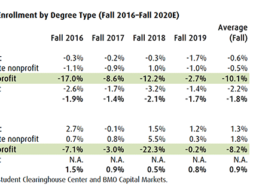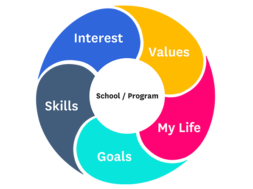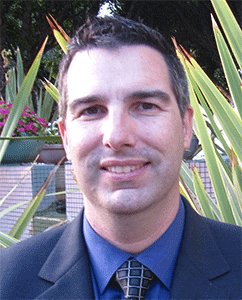
Audio Transcription and Postsecondary Education
By Jason Vernier, New Business Director, IntegriShield
Where we are today
2020 was a year of tremendous change that affected virtually every aspect of a college-bound students’ life. Some schools have transitioned to an online or hybrid learning model. The SAT and ACT requirements have been widely waived and many schools have seen campus visits decline.
The challenges of 2020 have been evidenced by an overall decline in postsecondary enrollments. According to the National Student Clearinghouse Research Center, there was a 13.1% drop in postsecondary freshman enrollment in the fall of 2020 as compared to the fall of 2019.1
Contrarily, you may have read that many top colleges are receiving record numbers of applications. According to the Washington Post, Harvard University saw applications rise by 42%, while the University of Virginia was up 15%.2 This increase in applications is likely due to the halt of SAT and ACT testing rules.
However, many public and private colleges, outside of the top echelon, are not having a good year. According to an article by Jim Malatras, the State University of New York (SUNY) has seen a 20% drop in applications for 2020, one of the largest annual decreases in the system’s 73-year history.3 Schools within the Northeast, Midwest and Mid-Atlantic areas seem to be especially affected.
Communicating with prospective students
While facing new challenges, students are still exploring the continuation of their education. During the research phase of identifying an ideal school, prospective students often speak with one or more admission representatives at an institution.
Phone and video conversations are a critical way to connect with prospective students, answer questions, present benefits and increase interest in attending. However, school-to-student communication opens up the risk of misinformation and misunderstanding.
These days we are all familiar with the disclosure of “this call is being recorded for training purposes,” and those training purposes typically revolve around audio transcription and modeling. Transcription is a process where the speech within an audio or video recording is converted to text and subsequently analyzed.
Audio modeling and scoring takes the converted text and compares it to a pre-developed list of criteria. The “ideal model” which comprises the criteria is usually designed to improve the efficiency of information delivery, mitigate misinformation, decrease regulatory risk and improve the student engagement process.
The score that results from comparing the converted audio/video files can highlight training opportunities, rank third party marketers and provide school leadership with deep insight into existing issues, future trends and opportunities.
Since the education sector is highly regulated, it is vitally important that admissions representatives accurately provide information without making promises of employment, salary or scholarships.
Audio transcription and modeling offers an effective way for schools to identify and address issues across many areas of the school.
Schools that operate an effective audio monitoring strategy typically improve their student engagement process by providing more relevant and accurate information while mitigating regulatory risk.
Case study: 2018 – 20204
A multi-campus school had a goal to reduce the risk of admissions violations during on-campus and virtual student interviews. This school acquired student approval to record phone conversations and in-person meetings on campus.
A custom scorecard with 31 points was developed which included categories to address training issues and violations which put the school at risk. The average audio time audited each month was 20% of the total audio by campus and admissions representative to ensure all prospective student contact points were monitored monthly.
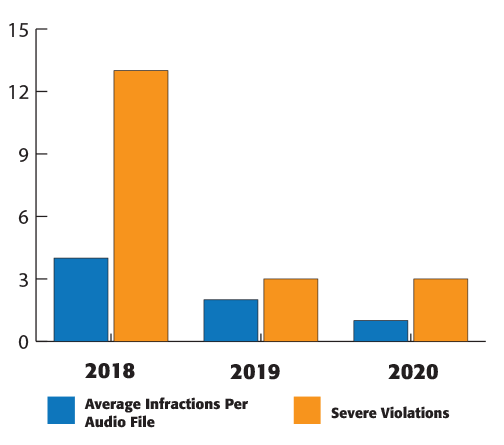 In year one, the school began with an average of four violations per file audited and an average campus scorecard rate of 87%. There were 13 severe violations resulting in corrective actions. In year two, we optimized the scorecard criteria to target specific issues needing attention. The scorecard in year two had 33 points. Each point was also assigned a priority to enhance the school’s coaching program. It included severe violations, warnings, coaching and training. These categories allowed admissions leadership to address training in both a group format and individually when coaching or warnings were necessary.
In year one, the school began with an average of four violations per file audited and an average campus scorecard rate of 87%. There were 13 severe violations resulting in corrective actions. In year two, we optimized the scorecard criteria to target specific issues needing attention. The scorecard in year two had 33 points. Each point was also assigned a priority to enhance the school’s coaching program. It included severe violations, warnings, coaching and training. These categories allowed admissions leadership to address training in both a group format and individually when coaching or warnings were necessary.
In year two, the school saw an average of two violations per file audited which was down 50% year over year. Campus scorecard rates averaged 94%, up 7% from the year prior. And severe violations resulting in corrective actions were down to three, which was a 78% reduction.
There were monthly meetings to review findings. Every meeting looked for opportunities to address each point being scored. As part of the process, we began compiling a representative month-over-month report to show progress by rep. We also implemented a report to assist admissions leadership with warnings and coaching. The report included all the file data along with time stamps and the language used resulting in the violation. This allowed leadership to quickly address issues month to month, leading to an improvement in results year over year.
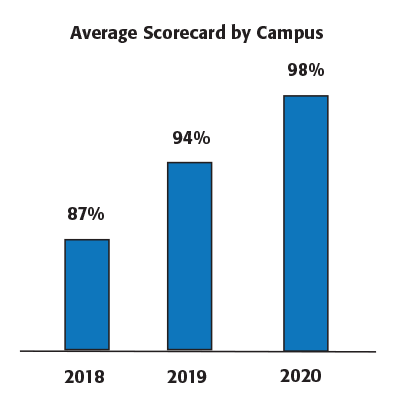 In year three, the school saw an average of 0.7 violations per file audited which was down 65% year over year. Campus scorecard rates averaged 98%, up 4% from the year prior. Actions were at three again, which was the same year over year.
In year three, the school saw an average of 0.7 violations per file audited which was down 65% year over year. Campus scorecard rates averaged 98%, up 4% from the year prior. Actions were at three again, which was the same year over year.
Year three presented unique challenges with all admissions representatives going remote.
Within the first month of the change, the scorecard criteria were adjusted to represent a higher volume of virtual audio more accurately. Virtual interviews took about one-third of the time of in-person interviews, so the percentage of files was increased by representative.
The service provided to the school would typically take five specialized staff members to complete in an average month. By outsourcing, the school has reduced the cost to what would be two staff members. The improvement in admissions has not only reduced the school’s risk, but they have reported an increase in enrollments year over year.
In summary
During these challenging times, postsecondary education has become much more complicated for both the student and the school. While students will continue to research options, schools need to ensure that they provide accurate and consistent information to avoid regulatory risk and deliver a positive, engaging experience for their prospective students.
The net result of a proactive approach will be a positive student experience, a streamlined engagement process, lower regulatory risk and a better-built brand.
References
- NSCRC Current Term Enrollment Estimates, December 17th, 2020 https://nscresearchcenter.org/current-term-enrollment-estimates/
- Applications surge after big-name colleges halt SAT and ACT testing rules, January 29th, 2021 https://www.washingtonpost.com/local/education/harvard-uva-sat-act-requirement-college-applications/2021/01/29/90566562-6176-11eb-9430-e7c77b5b0297_story.html
- The Pandemic Economy Has Left Millions Struggling. A New Approach in Higher Ed Could Help Pull Them Out, January 24th, 2021 https://empirereportnewyork.com/the-pandemic-economy-has-left-millions-struggling-a-new-approach-in-higher-ed-could-help-pull-them-out/
- IntegriShield, case study summary 2017-2020 https://integrishield.com/white-paper/audio-video-transcript-modeling/
JASON VERNIER brings over 20 years of expertise advising clients across multiple industries in challenges related to affiliate marketing, brand management, lead generation and data analytics. His affiliate management background gives his clients insight into lead generation activities and a unique approach to solving marketing issues. At IntegriShield, Jason enables brands to identify misrepresentation, fraud and regulatory risk, mitigating compliance issues while improving the consumer experience.
Contact Information: Jason Vernier // New Business Director // IntergriShield // 816.656.8921 x1013 // jvernier@integrishield.com // http://integrishield.com/


